
Special Feature: AERODYNAMICS

AERODYNAMICS
Mystery of Flying
Aircraft use the air to lift them off and fly like birds.
But how? There are still unsolved, complex phenomena in flying. JAXA is trying tirelessly to figure them out from aerodynamics point of view.

ep. 1
Viscosity of Air
Insects will not be hurt even when they fall
from the top floor of a building
Air is sticky—not because of high humidity in Japanese summer but because of the nature of air in general. In addition to thermal expansivity, air also has viscosity by nature. The viscosity of air is felt particularly strongly by small creatures. Shunsuke Koike, a researcher whose main expertise is in aerodynamic wind-tunnel measurements, explains:
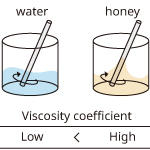
"For insects, air is like oil for humans. Air has viscosity like sticky grease. Ants will never be crushed on the ground even when they fall from a very high place. This is because of that viscosity. For ants, it's like falling slowly in sticky oil. When small insects like butterflies fly, they actively utilize the viscosity. They create air vortexes around the tips of their wings to fly."
In fact, JAXA was studying a flight method that actively utilizes the viscosity to fly like insects in densely populated areas.
The viscosity also plays an important role for aircraft to gain lift for flight. However, it, at the same time, generates drag which works as a resistance to their forward movement. Aircraft fly in a manner totally different from that used by insects but, needless to say, cannot avoid the effect of viscosity.
"When large vortexes are generated by the viscosity over the wings, they will pose a resistance and cause aircraft to lose their power for flight. So we are studying how to utilize the viscosity effectively and create more favorable flows of air around the wings," says Koike.

|
Shunsuke KoikeResearcher
|
|---|

ep. 2 Wings and Aerodynamic Lift Imitating birds' beautiful manner of flight
While butterflies and other insects fly by generating air vortexes around their flapping wings, birds larger than a certain size can fly almost with no movement of their wings. Birds that can glide through the air without flapping their wings utilize aerodynamic force called lift. Masaru Naruoka, is a researcher studying flight characteristic, and has been engaging in measurement of data from flying aircraft. He explains how birds fly in a different manner from insects:
"Wandering Albatrosses, a world's largest sea bird with the distance from tip to tip of their wings can reach three meters, can fly for 1,000 kilometers without landing on the sea. They excel at gliding and can fly very efficiently. This smooth flight is made possible by lift, which is mainly produced around their wings. They utilize this lift efficiently."
Lift is the force that is generated by a fluid flowing past the wings and acts in an upward direction to support birds in flight. Once they reach a certain speed, albatrosses can fly over a long distance by "riding" on the air.
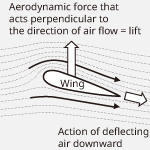
"Large wings are not the only precondition for developing large aerodynamic lift. Some birds, like swallows, gain lift by flying fast. Their wings are small, but this is made up for by their speed of flight," says Naruoka.
Falcons also maintain gliding flight while in search of prey and, once locating their prey, change shapes of their wings to swoop down to catch it. In this way, birds control the amount of aerodynamic lift generated by their wings. Humans have been studying and imitating, and continue to study and imitate, birds' wings to fly.

|
Masaru NaruokaResearcher
|
|---|
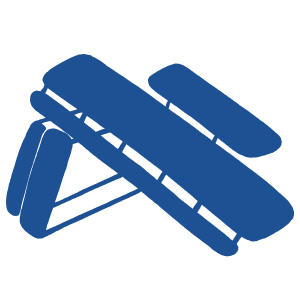

ep. 3
Design of Airfoils and Study on Airflow
Aircraft have evolved along with the development of
techniques to overcome air drag
The design of aircraft, which started by imitating birds, has undergone many changes. Tatsunori Yuhara, a researcher who engages in the design of aircraft wings, says it is a history of overcoming air resistance, or air drag. He explains, beginning with talking about the Wright brothers:
"Air drag consists of viscous drag and pressure drag. The former is like being dragged by air, while the latter is like colliding with air. The first aircraft invented by the Wright brothers had an awkward design. This is probably because first priority was given to the safety of the pilot and not much attention was paid to reducing air drag. But when safe flight was established, aircraft designers started to pursue faster speed and higher efficiency and are still exploring ways to reduce drag. One such ultimate result was the Concorde, a supersonic passenger airliner. Its wings were triangular in shape to reduce pressure drag. Current passenger aircraft fly at Mach 0.7 to 0.8, which are 70 to 80% of the speed of sound, but air flows in some zones around their wings reach supersonic velocity. This generates shock waves due to the compressible nature of air, causing greater wave drag. Modern airfoils are designed by taking this phenomenon into account and inclined down slightly toward the body."
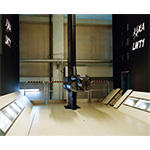
While complex, viscous and compressible air flows control the conditions around the wings, research will continue to pursue the optimum shape of the wings that achieves the best-balanced flight. The history of aircraft is a history of clarifying the mechanism of air flows.

|
Tatsunori YuharaResearcher
|
|---|
ep. 4 Equation for Expressing Air Flow Solving reality using an unsolved equation
Universal gravitation, inertia, and other physical laws can be expressed by mathematical expressions. These expressions provide theoretical foundations, which are compared with actual phenomena to find realistic "answers." In the case of aviation, "answers" are designs of aircraft and expressions used are called the Navier-Stokes equations. The Navier-Stokes equations are very complicated, difficult expressions, and, although they were derived more than 100 years ago, remain mathematically unsolved. As a matter of fact, it is even not known whether there are solutions to the equation in the first place. Masashi Kanamori is a researcher who utilizes these expressions for numerical analysis of air flows around aircraft.
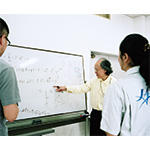
"The Navier-Stokes equations are one of the Millennium Prize Problems, for each of which a one-million-dollar prize is offered for anyone who could discover the solution. The equations are so difficult that we even don't know whether there are solutions. So, for these equations, what is required to do for the prize is—not find the solutions—but answer whether or not the solutions exist. Because we cannot solve these equations as they are, we used to simplify them by ignoring the air viscosity part or the compressibility part, but it's impossible to explain complicated air flows by ignoring those important nature of air. So when solving the equations, manufacturers now usually use computers rather than paper and a pen."
In the actual process of designing and manufacturing aircraft, designers utilize both computer calculations and flight tests to complete their job. Without either of them, the safety of aircraft cannot be assured.

|
Masashi KanamoriResearcher
|
|---|
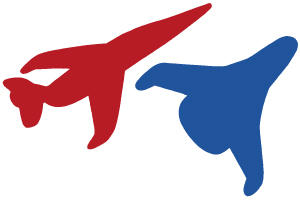
ep. 5
Numerical Simulation
Simulating air flows using a computer
to design future aircraft
Aircraft simulation can be divided roughly into three kinds: wind-tunnel experiment to study airflow in a tunnel using an aircraft model and exposed it to artificially generated airflow; flight test to obtain and analyze data from an actual flight; and computer calculation. Unlike the first two types of test that use a physical model or aircraft, computer-based numerical simulation allows researchers to study, not just pressure, but various other factors like temperature and velocity. Kanako Yasue, a researcher, describes numerical simulation as the "art of mosaic making" and explains:
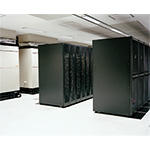
"The technique used most frequently for analyzing air flows around an aircraft is a simulation method using computational grid that divides space into a number of boxes. For each box, we analyze how an air flow changes using a governing equation called the Navier-Stokes equations. These boxes are then combined together to see an overall picture. The greater the number of boxes analyzed, the greater the precision of the overall picture. The process of this simulation method is generally like first defining the shape of the object, and then setting computational conditions, forming a computational grid, and calculating and visualizing air flows."
Great advantages of numerical simulation are more cost-saving than flying an actual aircraft as well as safe because it allows researchers to foresee a danger that may occur in actual flight. Numerical simulation is also playing an important role in developing totally new aircraft. It is supporting the design of future aircraft, such as electrically-powered aircraft and compound helicopter, which is capable of flying twice faster than conventional helicopters, both of which are currently being developed by JAXA.

|
Kanako YasueResearcher
|
|---|
Our job is to explore and reveal the unknown on the earth
"The biggest difference between aeronautics and space is whether air exists or not. While air flow causes various complicated phenomena, we humans owe a lot to air that brings us many benefits including flying by aircraft," says Takashi Aoyama, the director of the Numerical Simulation Research Unit of the Aeronautical Technology Directorate.
JAXA is well known for its space-related activities, but the organization also has many specialists doing aeronautical R&D. According to them, aeronautics has its own appeal which cannot be found in space; it is the existence of air. Masashi Kanamori, a researcher, points out that the existence of air leads to the design of beautiful shapes.
"Satellites usually have a rustic shape. This is because space has no air. Their shape doesn't need to be sophisticated or streamlined because there is no need to consider drag caused by air. But in the case of aircraft, various aerodynamic factors that need to be taken into consideration, such as viscosity, lift, and drag, which, as I have mentioned in this article, are closely related each other in a complicated manner. The shapes of aircraft are an inevitable result of these considerations."
JAXA will continue its research to create new aircraft through a combination of numerical simulation, wind-tunnel experiments, and flight tests using actual aircraft, while probing into the mystery of air.
- Home>
- Global Activity>
- Public Relations>
- JAXA’s>
- JAXA's No.78>
- Special Feature: AERODYNAMICS